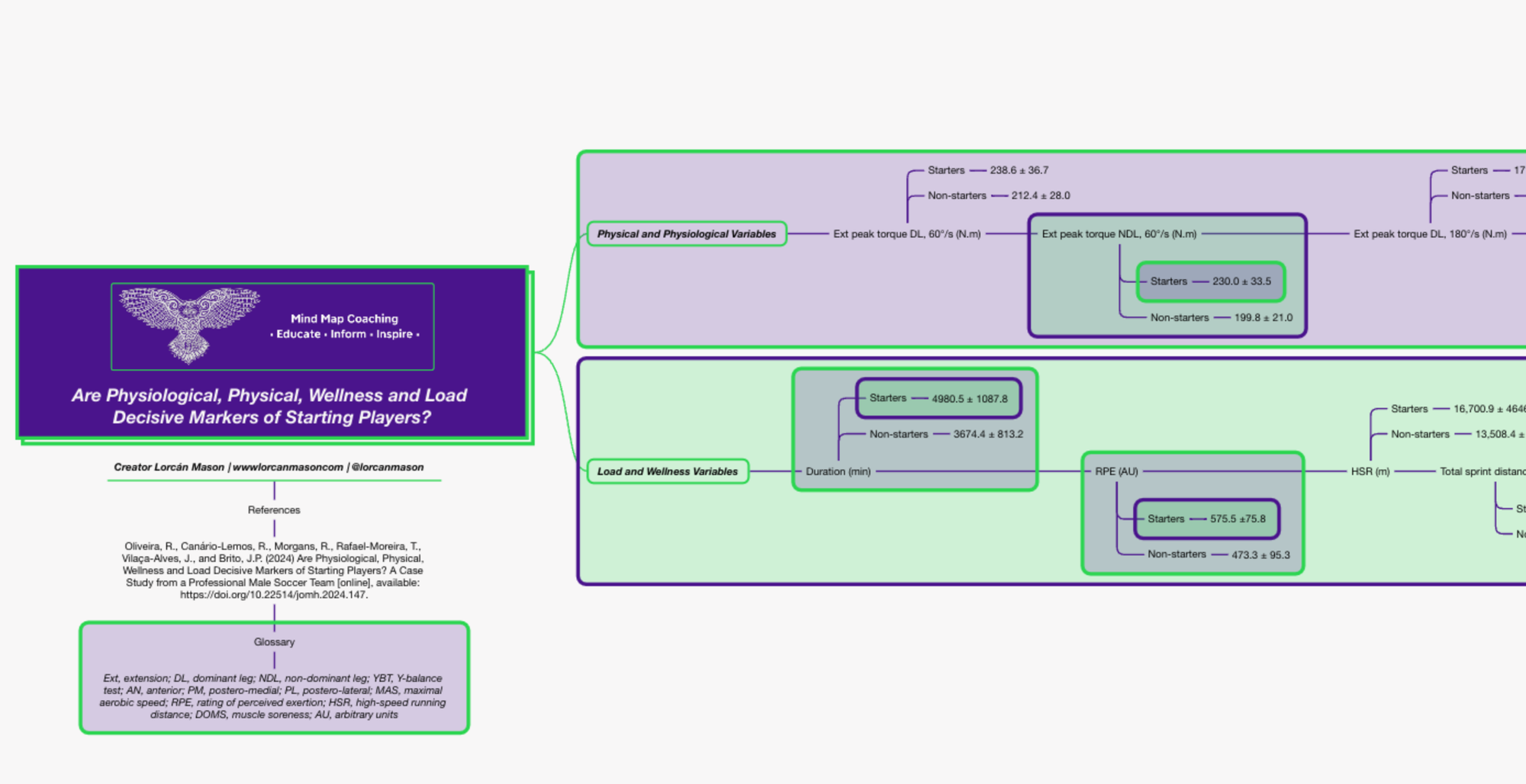Are Physiological, Physical, Wellness and Load Decisive Markers of Starting Players?
These findings suggest that factors beyond physical and physiological capabilities, such as tactical and technical skills, may play a more prominent role in determining starting status in this specific cohort.

Summary
The research aimed to compare various physiological, physical, accumulated wellness, and load markers between starting and non-starting players in a European professional football team. The research hypothesised that starters would exhibit higher physical and physiological capacities, accumulated load, and lower wellness levels due to greater match exposure compared to non-starting players.
Methodology
- Participants: The research involved 18 professional male football players from a national first division in a European league, with 10 classified as starters and 8 as non-starters.
- Data Collection: Data was collected over 20 weeks during the 2022/23 season (July to November), encompassing 75 training sessions and 15 official matches.
- Assessments: A range of assessments were conducted:
- Anthropometric and Body Composition: Height, body mass, and fat mass.
- Physical: Single leg squat jump (SJ), single leg broad jump (SLBJ), Y-Balance Test (YBT), and isokinetic tests for peak torque of both legs (extension and flexion at 60°/s and 180°/s).
- Physiological: 1200m shuttle Maximal Aerobic Speed (MAS) test.
- Wellness: Daily self-reported measures of fatigue, quality of sleep, muscle soreness, stress, and mood using a validated Google form.
- Internal Load: Rating of Perceived Exertion (RPE) collected post-training and matches using the CR-10 Borg's scale. Session-RPE was calculated by multiplying session duration by RPE.
- External Load: Data collected using a 10 Hz GPS unit (Catapult Vector S7) during training and matches, including high-speed running (HSR), sprinting, number of accelerations, and number of decelerations.
- Statistical Analysis: Descriptive statistics were used to present the data. Non-parametric Mann-Whitney U tests were used for variables that did not meet normality assumptions, while independent t-tests were used for the remaining measures. Effect sizes (ES) were also calculated and interpreted according to established criteria.
Results
Anthropometric and Body Composition: No significant differences were observed between starters and non-starters in height, body mass, or body fat percentage.

